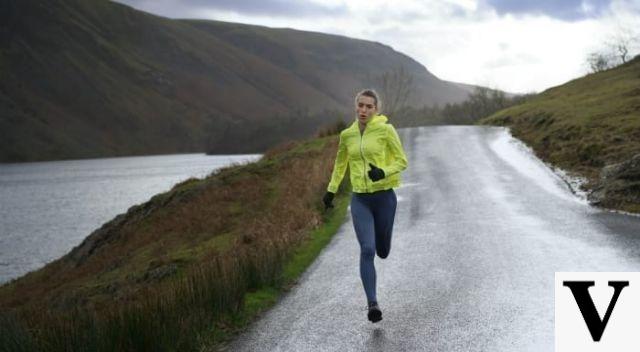Well, you finally manage to cover a decent distance, but not make those 5km in 30 minutes? If you feel comfortable over a certain distance, it is only natural to feel the need to cover it a little faster next time.
Whatever your time or distance goals, there is a lot more to consider when running than… well, the running itself. Here are some factors to think about to increase the pace of your run and thus improve your times and training in general.

1. Optimize Cadence
Cadence, a more familiar term for cyclists, is the number of steps (or turns of the pedals) taken per minute. According to dietician, personal trainer and triathlete Chrissy Carroll, “The best athletes all have in common an optimal cadence, which is around 180 steps per minute. The optimal cadence of the individual can however vary, it is an individual formula, influenced by weight, height, leg length, terrain and other factors. "
You can calculate your current cadence by counting the number of steps you take with your right foot over a period of 30 seconds. Double the number to get the sum of the steps for both feet, then double it again to get the number of steps per minute.
Chrissy suggests that “if the cadence is less than 170 steps per minute it would be a good idea to work on improving it. Rather than aiming for a standard 180 steps per minute, just take your current cadence and increase it by 5-10%. For example, if your current cadence was 155 steps per minute, you could aim to run 163-170 steps per minute. "
If you find it a bit difficult to run like this don't worry, it's completely normal. Your body is used to the cadence that came most naturally to you. To help you keep the beat, try using an application like a metronome or running around listening to fast-paced songs.
Find out more about Chrissy and her nutrition and training programs on her blog or on her Instagram.

2. Width of the Step
The goal is to be able to make as wide a stride as possible, always remaining at ease and keeping in mind that cadence of 180 steps per minute. It is best not to try too hard or take too large steps as both are typical causes of injury. Start slowly, find a pace that works for you and try to feel comfortable.
Concentrate on the fluidity of the movement, raising the knees well and placing the foot on the floor landing on the central part, keeping the pelvis, knees, ankles and toes aligned. Find your own pace and try to observe how wide the pace of athletes who are faster or more experienced than you are.
3. Set Goals
Running requires dedication and small improvements that are achieved over time. Chrissy says, "As much as you may want to work on improving your pace immediately, it's best to start slow and focus on building a solid aerobic foundation first."
“By running (or using a combination of running and walking) for 3-4 days a week, every week, you will begin to see improvements in distance and endurance. Once you can run for 30 minutes straight without getting too tired it will mean that the time has come to work to improve your speed. "
So, it is once you feel comfortable that it is time to make a change. Try to set a goal for the end of each week, whether it is to reduce the time taken to travel 5km by a few seconds or to maintain a more constant pace during the race.

4. Don't Skip the Session
As with any novelty, maintaining a regular routine will ensure that you create a long-term habit. If you run a couple of days each week, try to maintain this pace for at least a month or two without ever missing a session. After some time you will notice how much easier it is for you to follow the training plan, and you will probably also notice that your pace has accelerated!
Chrissy suggests “finding the best time to run during the day in line with your commitments and energy levels. Are you an early riser and prefer to get rid of the thought of training before going to face the whole day? Set the alarm and do it. Are you, on the other hand, a nocturnal creature and do you prefer a relaxing evening session in the gym to relieve stress? Get on the treadmill? treadmill just finished working. "
5. Optimal Recovery Between Sessions
Rest, hydration and nutrition are just as important as running. It is essential to recover as quickly and fully as possible after a run. To do this, Chrissy suggests “make sure you have something to eat or drink within 30 to 60 minutes of running. After a long run it would be best to consume carbohydrates and proteins in a ratio of 3: 1 or 4: 1. On the other hand, if the run is short, just eat a snack that contains both carbohydrates and proteins without worrying too much about the quantities in which they are contained. "
Check out some post workout snack ideas here.
To sum up
Who could have imagined there were so many ways to improve the pace of your run? The most important thing is to listen to your body, push it to the maximum while learning when to slow down and recover. Focus on one change at a time and see how your pace improves tenfold from the start.


























